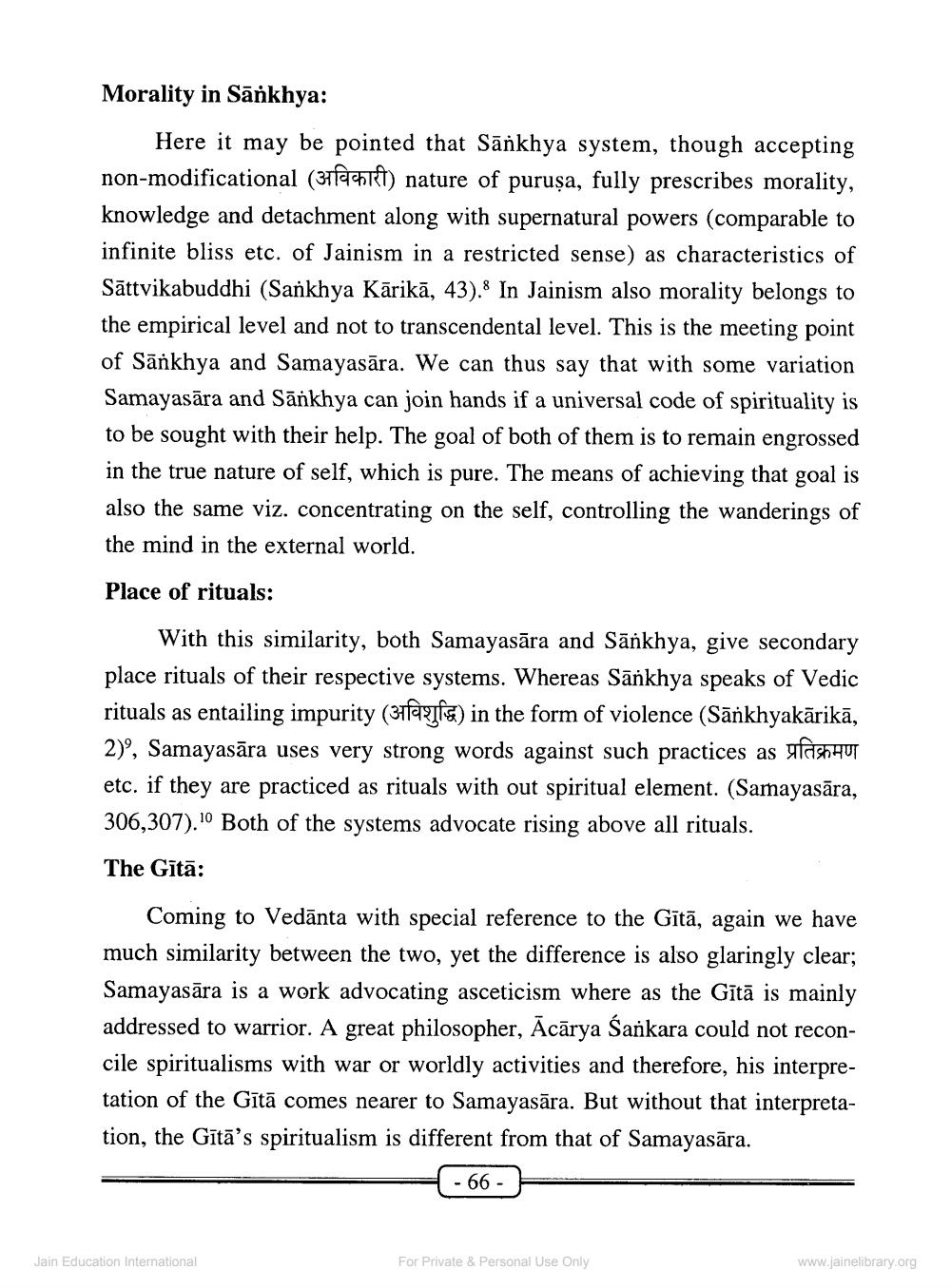________________
Morality in Sankhya:
Here it may be pointed that Sankhya system, though accepting non-modificational (3) nature of purușa, fully prescribes morality, knowledge and detachment along with supernatural powers (comparable to infinite bliss etc. of Jainism in a restricted sense) as characteristics of Sättvikabuddhi (Sankhya Kārikā, 43). In Jainism also morality belongs to the empirical level and not to transcendental level. This is the meeting point of Sankhya and Samayasara. We can thus say that with some variation Samayasara and Sankhya can join hands if a universal code of spirituality is to be sought with their help. The goal of both of them is to remain engrossed in the true nature of self, which is pure. The means of achieving that goal is also the same viz. concentrating on the self, controlling the wanderings of the mind in the external world.
Place of rituals:
With this similarity, both Samayasāra and Sankhya, give secondary place rituals of their respective systems. Whereas Sankhya speaks of Vedic rituals as entailing impurity (3faf) in the form of violence (Sankhyakārikā, 2)9, Samayasara uses very strong words against such practices as fashчUT etc. if they are practiced as rituals with out spiritual element. (Samayasāra, 306,307).10 Both of the systems advocate rising above all rituals.
The Gītā:
Coming to Vedanta with special reference to the Gītā, again we have much similarity between the two, yet the difference is also glaringly clear; Samayasara is a work advocating asceticism where as the Gītā is mainly addressed to warrior. A great philosopher, Acarya Sankara could not reconcile spiritualisms with war or worldly activities and therefore, his interpretation of the Gītā comes nearer to Samayasara. But without that interpretation, the Gītā's spiritualism is different from that of Samayasara.
- 66
Jain Education International
For Private & Personal Use Only
www.jainelibrary.org




